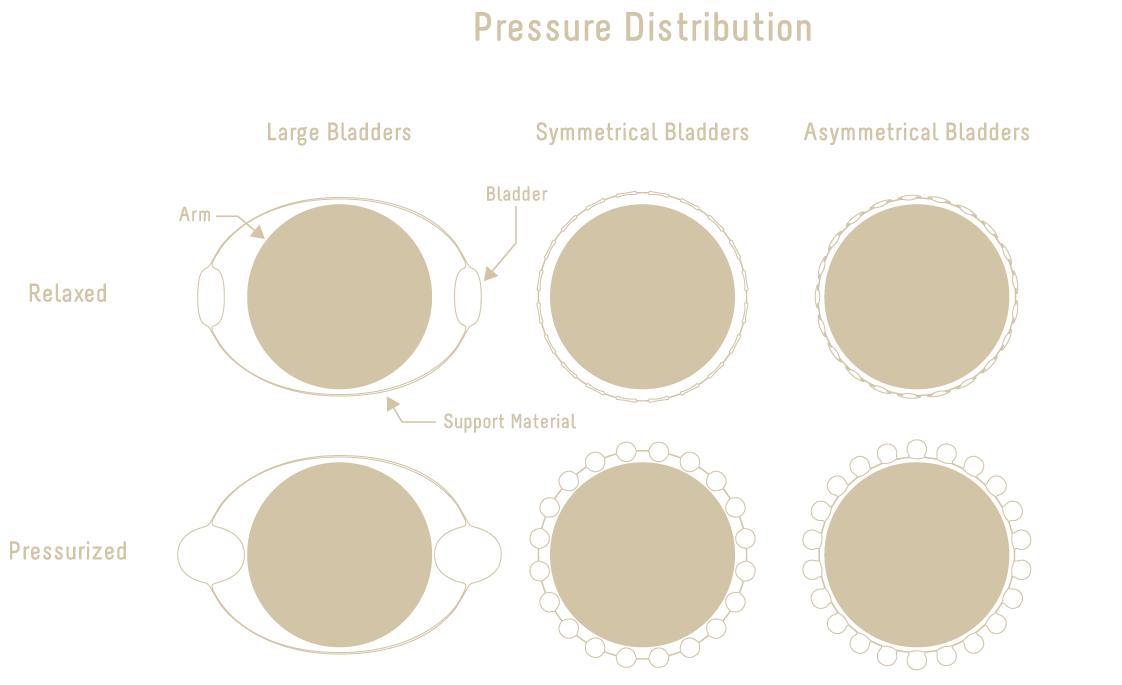
Now that there is a working prototype and we have gone through a couple of revs it's time to think about user experience. Currently the Neucuff uses two large cylindrical bladders on opposite sides of the arm to provide the torque on the elbow. This is simple and quick to prototype but has two drawbacks: to get an appropriate amount of torque the bladders need to be pretty large and therefore extend pretty far out from the elbow, and as the bladders inflate they attempt to become circular in cross section. This means that, unless the bladders are connected to the rest of the cuff tangent to the circular cross section, they will press into the arm and change the fit of the cuff. If it's fastened loosely the pressure is tolerable but some mechanical force is lost due to the cuff stretching. If the cuff is tight to the arm the decreasing internal diameter quickly leaves pressure marks on the skin which is a no-go for long term wear. If the device is to work as intended (worn all day as an active orthosis) then it's got to distribute the force of the actuators evenly enough to not cause repetition injuries.
On a base level the torque the cuff applies to the elbow is a factor of the internal air pressure multiplied by the bladder cross sectional area. If we can distribute that area over multiple smaller bladders this would reduce the internal diameter change of the overall cuff. If we continue with the method we are using to generate the larger bladders just scaled down it'll mean a lot of work and tooling to iterate prototypes. However, if we can create the bladders using heat sealing or a similar scale-able process, we can keep experimenting with different possibilities until something hits all the key factors we need.
Ideally we could heat seal the layers of material asymmetrically as we'd like to reduce the internal diameter of the cuff as little as possible while it undergoes its stiffness change. We have some ideas for creating this system, though it involves an investment in tooling.
I'll update with more details as they emerge.
 Matthew Borgatti
Matthew Borgatti
Discussions
Become a Hackaday.io Member
Create an account to leave a comment. Already have an account? Log In.